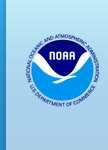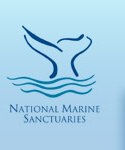Public Invited to Participate in Florida Keys National Marine Sanctuary "BleachWatch" Training Program
July 05, 2011
Florida Keys National Marine Sanctuary and Mote Marine Laboratory’s Tropical Research Laboratory invite divers and snorkelers to attend a BleachWatch volunteer training at 7 p.m. on Thursday, July 14, at the Florida Keys Eco-Discovery Center, 35 East Quay Road, Key West, Fla.
Training participants will learn how to identify different species of corals and detect signs of coral bleaching. Trained BleachWatch volunteers are asked to report their observations of both healthy and stressed coral after diving or snorkeling Florida Keys reefs. Volunteer observations can help sanctuary managers in the early detection, assessment and response to coral bleaching. Observations may be submitted via fax, mail, email or online.
“BleachWatch observations play a critical role in early detection of coral stressors,” said Sean Morton, sanctuary superintendent. “Through ‘citizen scientist’ programs like BleachWatch, volunteers have the opportunity to help resource managers better understand and respond to threats to coral reefs.”
Coral bleaching occurs when corals become stressed and lose the friendly, symbiotic algae that give them their distinctive colors. If a coral is severely bleached, disease and partial mortality become likely, and the entire colony may die.
Bleaching can be caused by a wide range of environmental stressors such as pollution, increased sedimentation, extremes in sea temperatures and salinity, low oxygen, disease, and predation. In January 2010, the Florida Keys experienced the first cold-water bleaching event in more than 30 years when water temperatures dipped to 52 degrees for several days.
Bleach Watch is funded by Florida Keys National Marine Sanctuary and managed by Mote Marine Laboratory.
Florida Keys National Marine Sanctuary protects 2,900 square nautical miles of critical marine habitat, including coral reef, hard bottom, sea grass meadow, mangrove communities and sand flats. NOAA and the State of Florida manage the sanctuary. Visit us at floridakeys.noaa.gov or on Facebook at www.facebook.com/floridakeysnoaagov.
NOAA’s mission is to understand and predict changes in the Earth's environment, from the depths of the ocean to the surface of the sun, and to conserve and manage our coastal and marine resources. Join us on Facebook, Twitter and our other social media channels.


